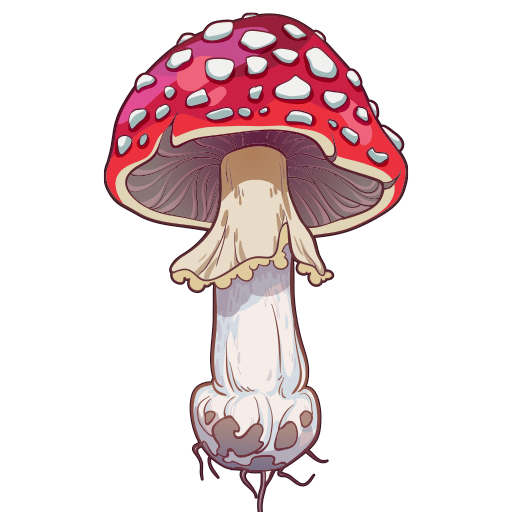Agaricus
Button Mushrooms
Cap Shape and Color: Agaricus mushrooms typically have caps that are initially rounded, becoming more flattened with age. The cap color varies among species, ranging from white to brown, and sometimes has fine scales or fibrils.
Gill Color and Attachment: The gills of Agaricus mushrooms are free from the stem (not attached to it) and change color as the mushroom matures. They usually start out pink, then turn red-brown and finally a dark brown as the spores mature.
Stem Features: The stem is usually sturdy and may have a ring or skirt-like structure (annulus) around it. Some species have a bulbous base.
Spore Print Color: A key identification feature for Agaricus species is the spore print color, which is typically chocolate brown. To take a spore print, the cap of the mushroom is placed on a piece of paper for several hours, allowing spores to fall and create a print.
Odor: Many Agaricus species have a distinct odor, which can range from pleasant (almond-like in Agaricus arvensis) to unpleasant (phenol or chemical-like in Agaricus xanthodermus).
Habitat: They are often found in grassy areas, lawns, and fields, but some species grow in woods. Knowing the preferred habitat of specific Agaricus species can aid in identification.
Bruising Reaction: Some species of Agaricus, such as Agaricus xanthodermus, display a yellow staining or bruising reaction when the cap or stem is damaged or aged.
Edibility: The classic button mushrooms are in the Agaricus genus. While many other Agaricus mushrooms are popular and edible, some species are toxic. The Agaricus xanthodermus, for example, causes gastrointestinal distress. Yellow-staining, and chemical scent are good indications for potentially toxic Agaricus species. These are not adequate for identifying edible species.
It’s important to remember that mushroom identification should be done cautiously, especially when foraging for edible species. Mistaking a toxic species for an edible one can have serious health consequences. For accurate identification, consulting a field guide or an expert is recommended.
